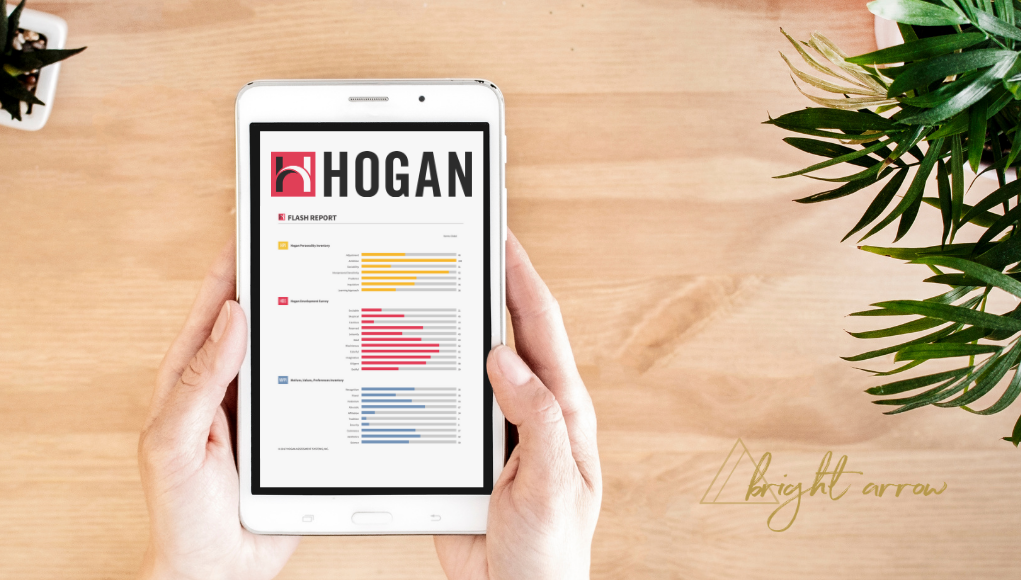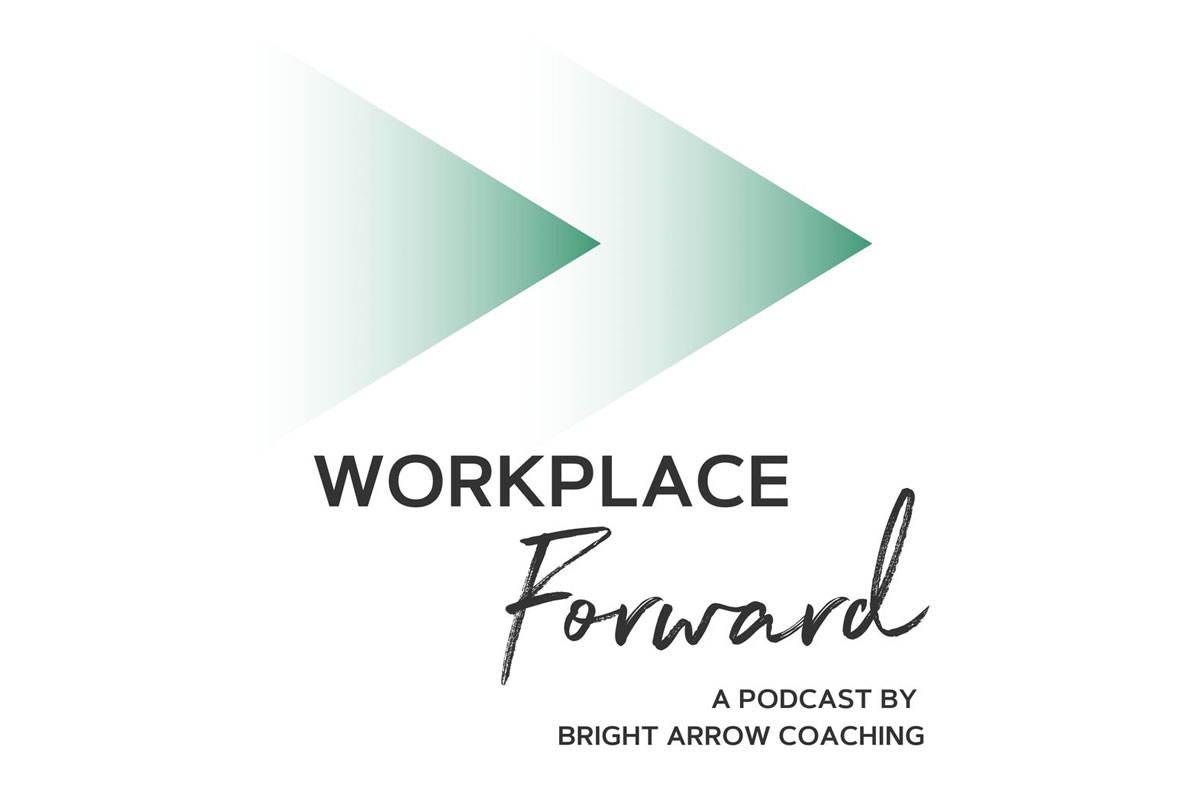The Hogan Leadership Forecast Series assessment measures normal personality characteristics, career derailment risks, and core value drivers. Personally, I had not been a fan of most personality assessments in the past as they felt like they didn’t have teeth. The reports usually made me feel good about myself but weren’t terribly helpful in revealing how others experience me or what the derailers might look like in a work environment. I was curious about Hogan because it is a highly sought after report in the senior leadership and executive space (both for selection and professional development). I also found this assessment attractive because it uniquely gives insight into how our self-concept may vary from how the world experiences us. A very common disconnect in the executive space for lots of valid reasons!
It took me about an hour to complete the assessments. The analysis produced five robust reports and tools (to the tune of nearly 90 pages). I will highlight three main reports in the series that brought me to some surprising insights.
Download Now: Sample Hogan Assessment Challenge Report.
An important point I learned from my Hogan administrator (as I shared with him my surprise with some of the results) is that low scores are not “bad”. High scores are not “good”. This is not a good versus bad type of assessment. The scores for each scale indicate different characteristics, not positive or negative. (Sigh of relief.)
The Hogan Personality Inventory (HPI)
The Hogan Personality Inventory describes normal or bright side personality—qualities that describe how we relate to others when we are at our best.

Personally, I think of this part of the series as “jazz hands.” Essentially, this report shows us who we are when we know we are “on stage” and being watched. This is the best version of ourselves. All seven scales in this report were extremely interesting, but one stood out as shocking. So much that I challenged it with the administrator who did my debrief.
I scored quite low on the “Learning Approach” scale. Yes, me. I graduated from college with honors. I’ve led Learning and Development. Won awards for the training programs I’ve built. I’m constantly, constantly learning and teaching others what I learn. So, how in the world could I score low on this?!?!
After my administrator gave a deeper explanation of what learning approach meant, I could see how the results were true. I came to understand that this scale actually shows that I am constantly reading, and appreciate formal education. However, I do not learn for learning’s sake. I learn with purpose. I am diligent about expertise building in several areas and so those areas are where I focus my learning. (Deep breath.)
The Hogan Development Survey (HDS)
The Hogan Development Survey describes the dark side of personality—qualities that emerge in times of increased stress and can disrupt relationships, damage reputations, and derail chances of success.
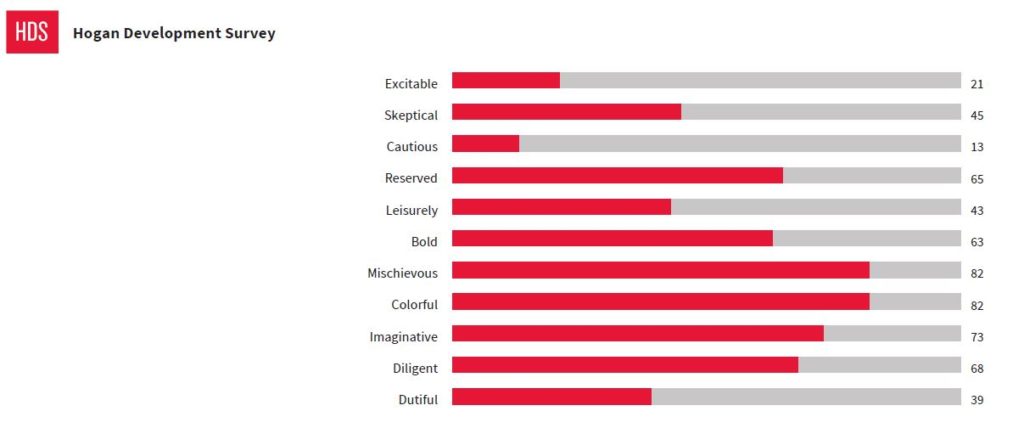
This report shows us how other people experience us when we forget that we are “on stage.” Given the levels of volatility, uncertainty, complexity, and ambiguity my fellow leaders are operating under, I know we could all benefit from being reminded of our unique derailers that emerge under stress and are struggling to be “on” all the time.
In the South we use the colloquialism, “your slip is showing”. (Usually preceded or proceeded by a sarcastic “Honey”). Meaning, you weren’t paying attention and the lining of your skirt is peeking out from under the hem and the world can see your undergarment! This is how I lovingly think of this report from the series.
In all seriousness, this part of the series made me think deeply about how I’ve been showing up in the world while under a unique amount of stress. Our country is experiencing financial, political and civil unrest. And I feel it all. I’m running a business while being a new mom with no childcare while I do so. (My husband and I take turns working and caring for our daughter throughout the day.) I haven’t left my house in several months for any meaningful amount of time as we are practicing isolation and social distancing. I don’t look or feel like who I was seven months ago (due in part to not being able to visit the hair salon and part to not having the level of social interaction I need). There is no way I’m showing up all the time with jazz hands. So, I was curious about what the world experiences when my slip is showing or I forget that I’m on stage.
Of the eleven scales in this report, I was shocked to see that I scored fairly high as “reserved”. This tells me I value private time and under stress can prefer to work alone, withdraw, and appear unapproachable. I may keep others at a distance and become detached. I can get task-focused and may seem cold.
My initial reaction was judgment: “this is not what a good leader does.” With a dash of “I would not do this to my team and partners.” I scanned back through stressful times in the past. I evaluated this stressful time I’m in now. With compassion for myself, I acknowledge that this is what I, as a human leader, who feels depleted, may do. No, I would never intentionally do this to my employees and partners, but it is true that I have in the past. Yikes. It is hard to say that aloud.
When I am under extreme pressure and stress I tend to work harder to try to dig my way out of it and to “win” despite the circumstances. When I’ve turned into a task-focused leader I have forgotten to lead with heart because I was busy in my head. And, under stress I have (subconsciously) tended to keep others at a distance because I didn’t want them to see me sweat! (Although, if you’ve read this article, I eventually learned that employees often know that something is ‘going on’ whether you want to acknowledge it or not). Yes, yes, I’ve totally done all those things the report described. And I am thankful for the reminder to stay conscious of those derailers right now. We all have derailers. Leadership development is about coming to know what they are, managing them, and forgiving ourselves for them as we need to. (Another deep breath.)
The Motives, Values, Preferences Inventory (MVPI)
The motives, Values and Preferences Inventory describes personality from the inside. The core goals, values, drivers and interests that determine what we desire and strive to attain as well as the work environment we are naturally inclined to create as leaders.
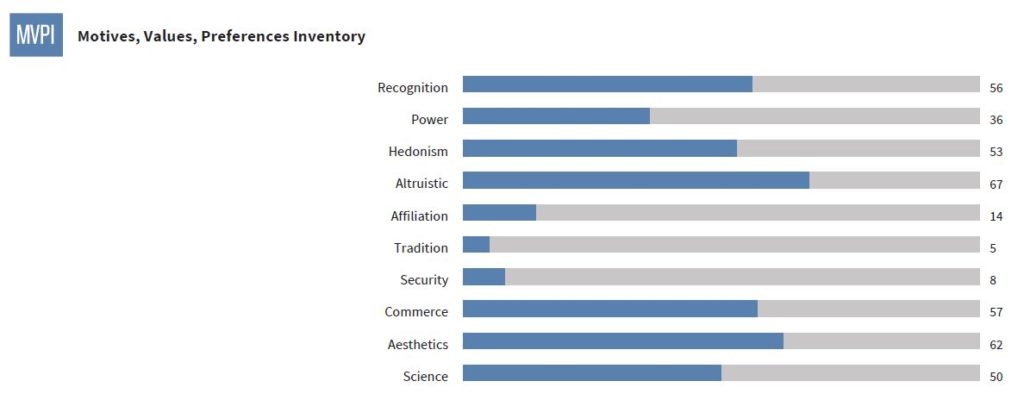
All the values work I’ve done over the years examined a broad set of values I hold. Across all components of my life. What I appreciate about this part of the series is that it hones in on our values in the workplace specifically.
Of the ten values assessed in this report, there are two that I scored shocking low on: tradition and security. I found them shocking simply because of how very little I seem to value those two things.
For me security is money and I like making money! So, I was a bit confused about this until I came to understand that this value is defined as “a degree of stability and order.” Scoring low on tradition was not terribly surprising as too much tradition in the workplace feels oppressive to me and I’m aware of that. The upside of these low scores is that they make me a great entrepreneur. I am comfortable taking risks, innovating, iterating. I’m okay with my work being unpredictable.
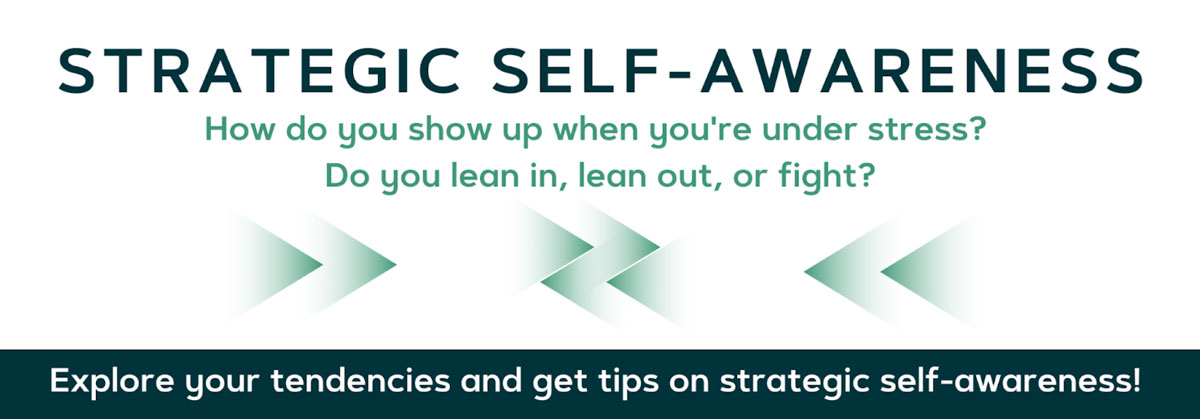
As a leader, the reason it was super important for me to examine my scores for these two values is because these are two values that are often highly important to others! As a leader, I need to be aware that my team members and partners may need to have these two values honored by the culture I create in order to find the psychological safety they need to do their best work. I can look back and see where I may have isolated others in being able to operate without those things in place. I’m so thankful for this new awareness as I go forward.
My personal experience with this assessment was so profound that we at Bright Arrow now administer it. We want our clients to have this framework to view their past, present, and future lessons through. Reminding them that they are uniquely perfect as they are. That we all simply need to know ourselves well so that we can have what we need from work, manage ourselves under stress, and—importantly—as leaders, create what others need in order to do their best work.
Love this post? For a regular dose of empowerment delivered right to your inbox, sign-up for Bright Arrow Digest here.

